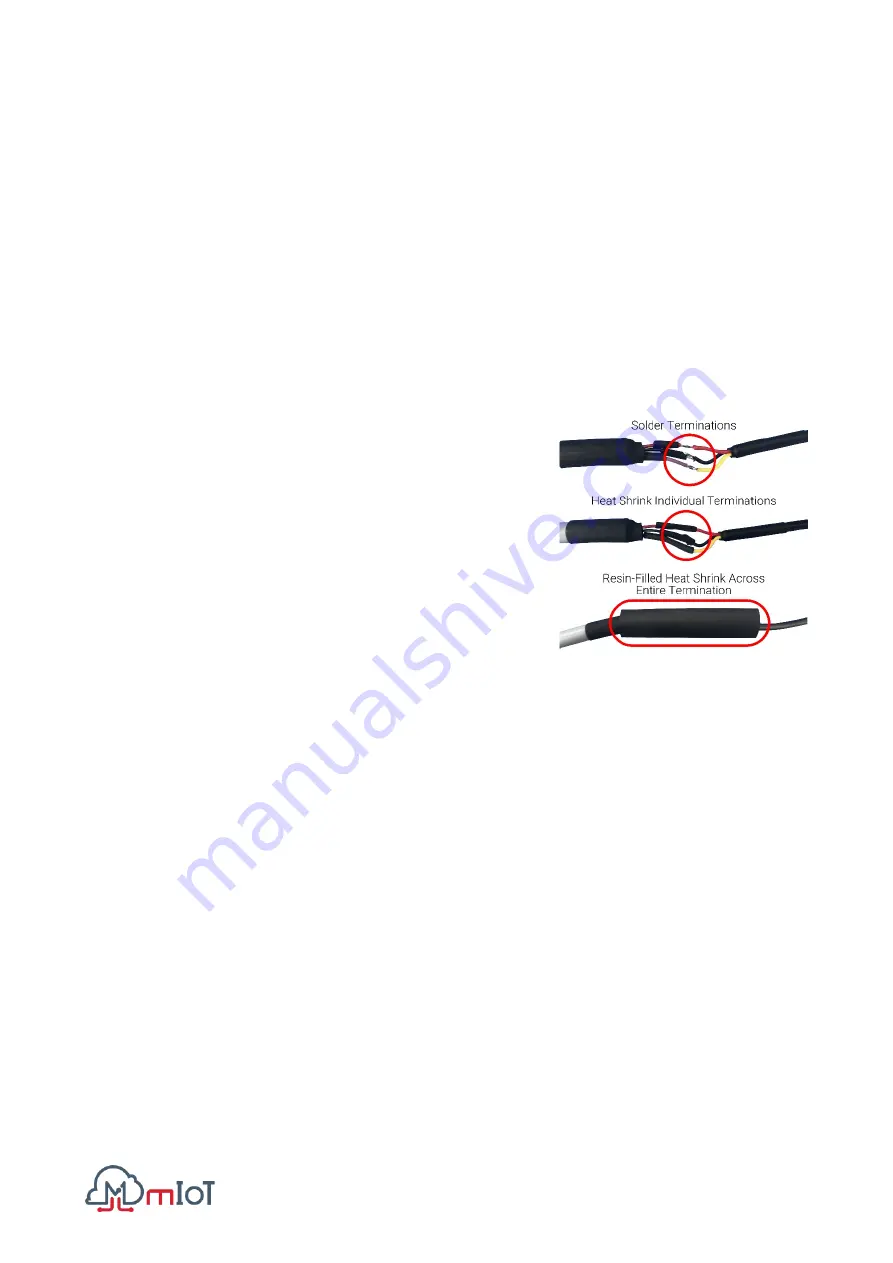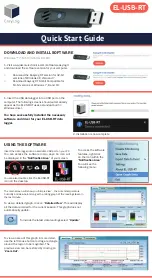
mIoT Captis Installation Guide
September 2020
10
Rev 5
TERMINATION PRECAUTIONS
When connecting the Captis to a sensor:
•
Ensure that the connection is sealed and insulated appropriately.
•
Ensure that the connection is made electrically safe.
•
Isolate any unused cables.
To ensure the efficacy of your Captis on-site installation and the on-going safety and sustainability of your
installation, mIoT recommends that you follow these best practice procedures for terminating and
waterproofing your sensor connection.
TERMINATION:
To ensure on-site sensor connections remain intact, the Captis can be configured with a loopback cable cut
detection. It is recommended that this loopback is performed as close to the sensor as possible, giving the
best possible tamper coverage of the sensor cable.
WATERPROOFING & PROTECTION OF TERMINATIONS:
mIoT recommends that standard electrical termination waterproofing
procedures are followed, including the use of suitably IP rated
junction boxes, scotch locks, solder terminations and other terminal
style connections.
These terminations are recommended to be water-proofed by means
of resin-filled heat shrink or self-amalgamating tape or other
standard, secure electrical waterproofing means.
WATERPROOFING & PROTECTION OF SMA CONNECTOR:
When the SMA connector is securely fastened (finger tight only) to the Captis’ SMA connector, the seal
which is enclosed within the connector (on the antenna side) creates a seal against the housing preventing
moisture intrusion.
Further protection can be added if required by the installer by using a small piece of resin filled heat shrink or
self-amalgamating tape to further protect the connector.
OTHER BEST PRACTICE CONSIDERATIONS:
Do not suspend the Captis by the cable.
Do not stress the exit port of the Captis unit: maximum cable bend radius of 85mm
Do not introduce any severe or unnecessary bends to the cable.


































